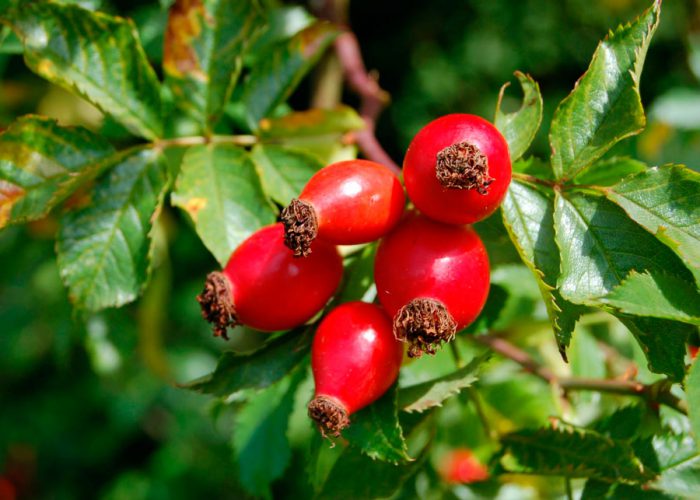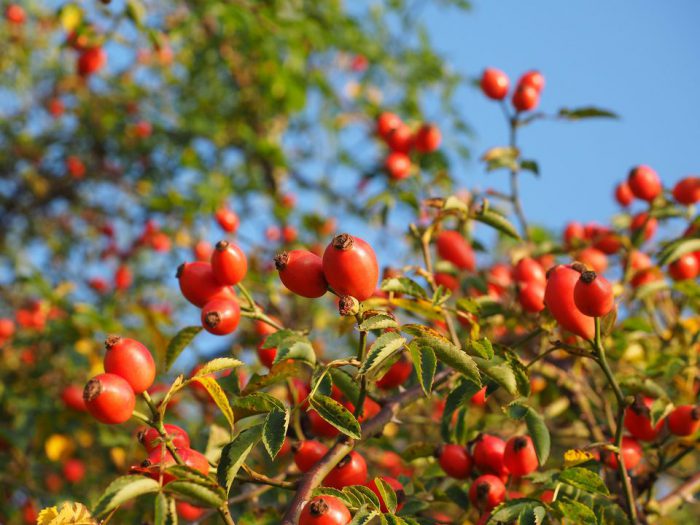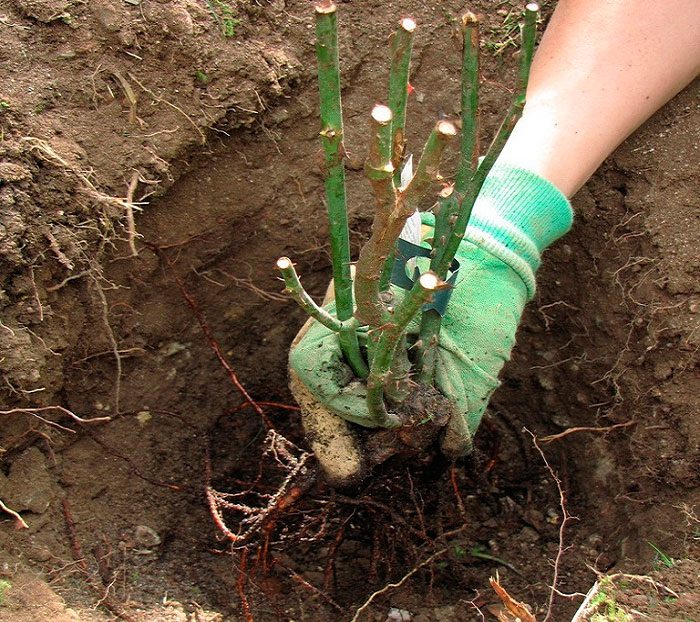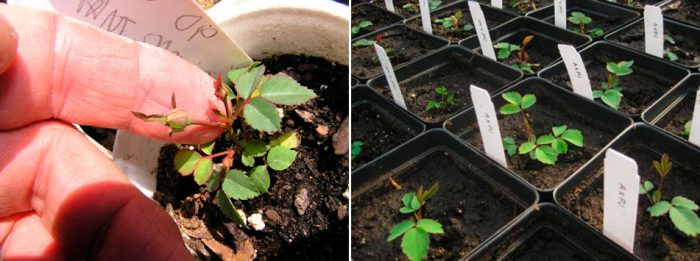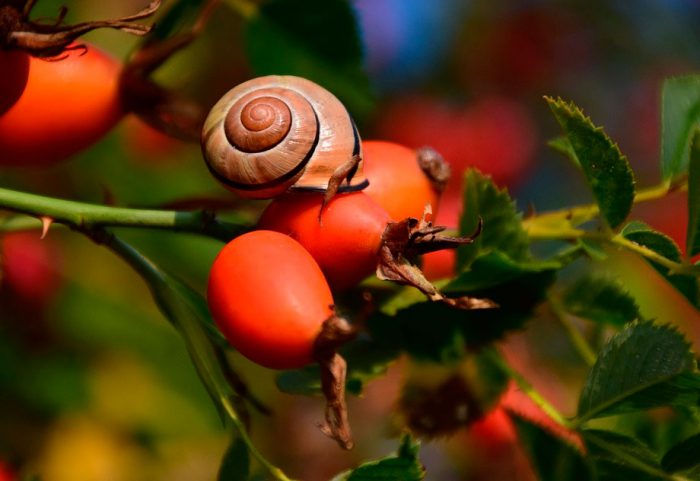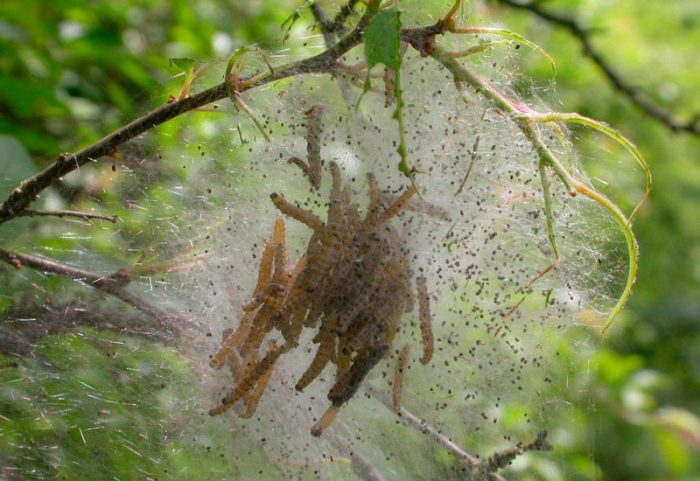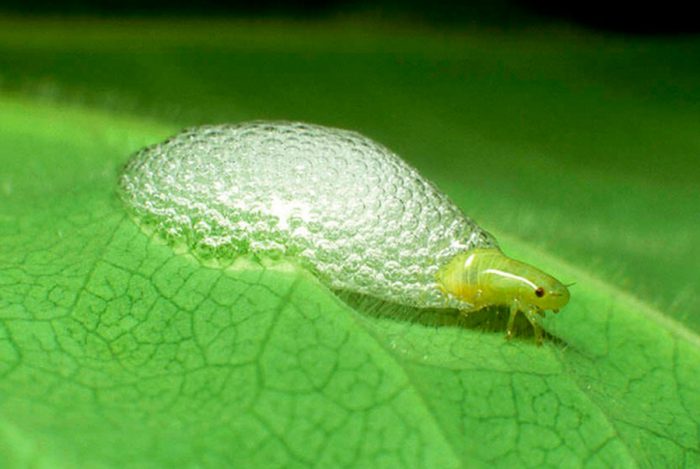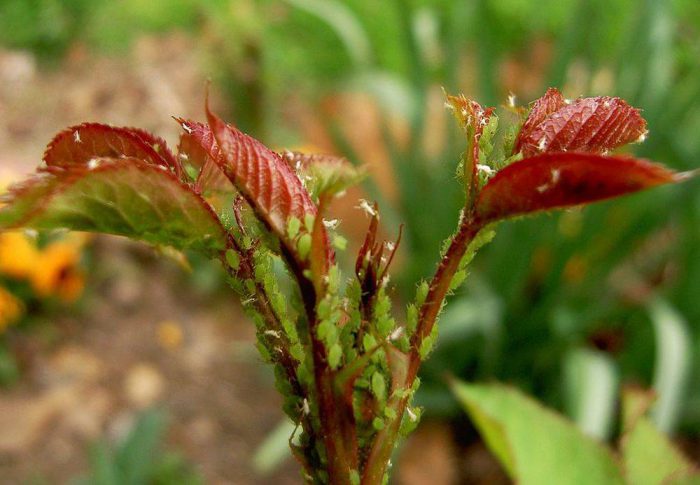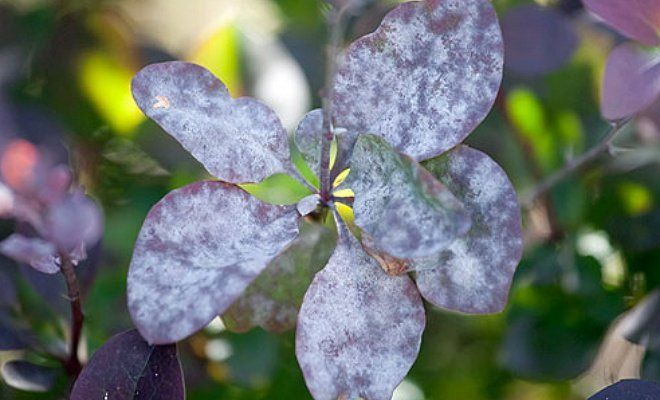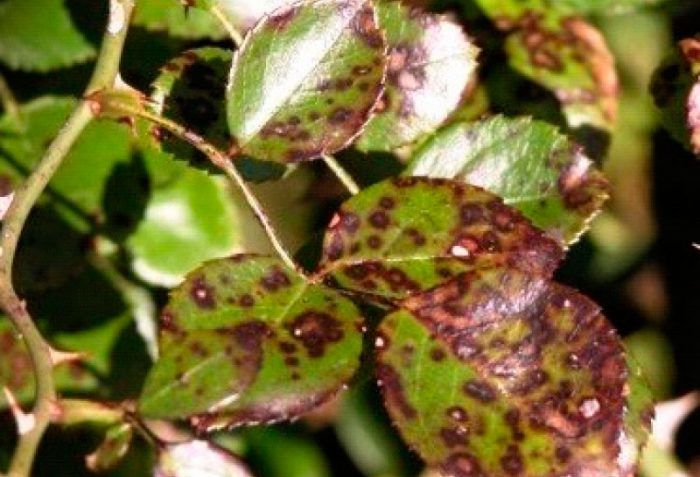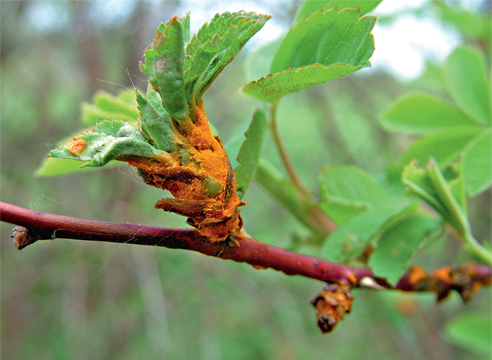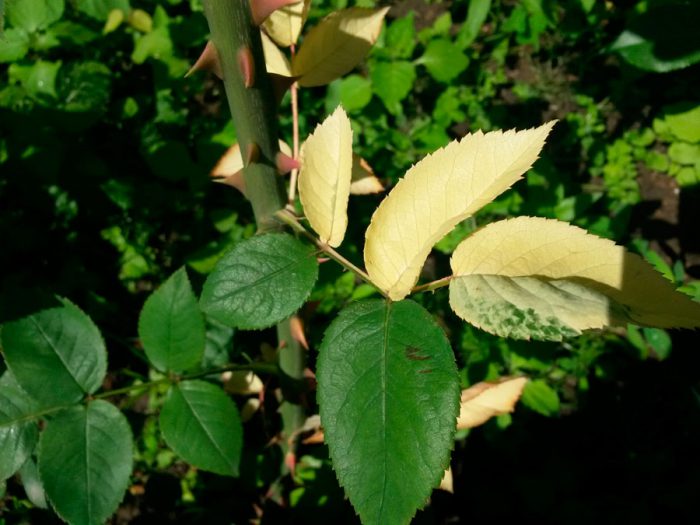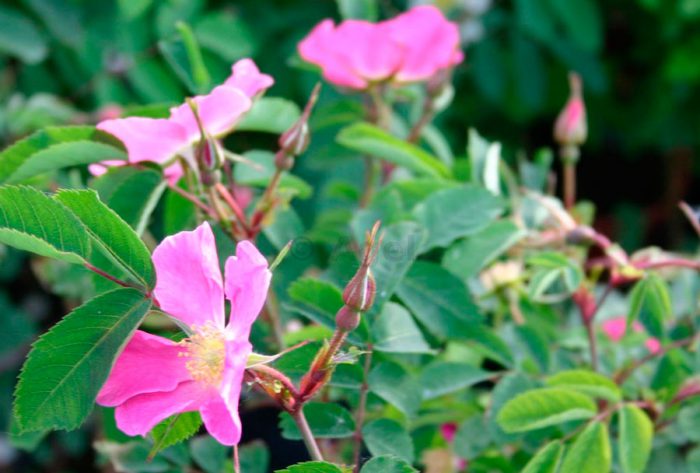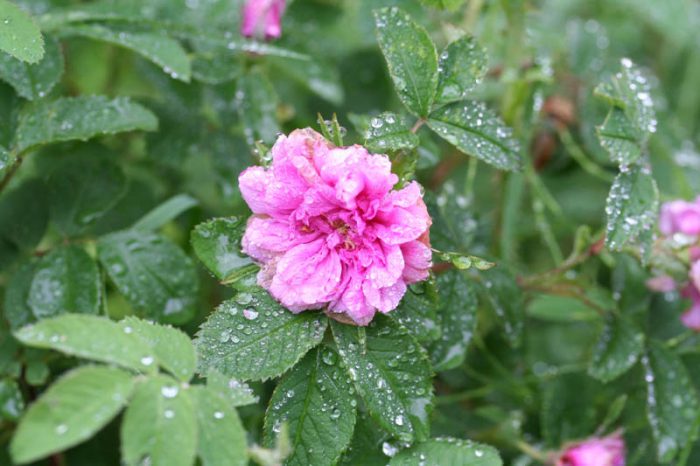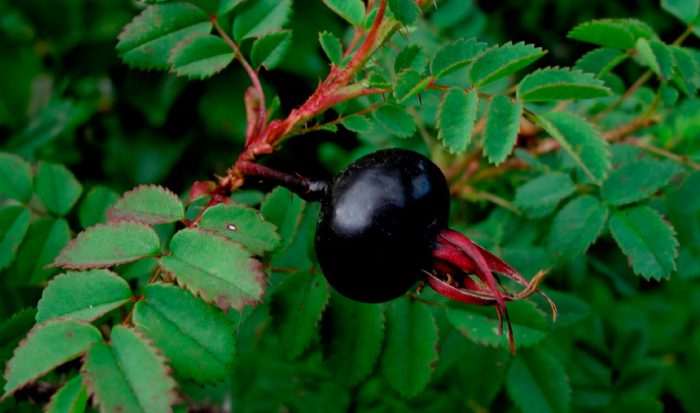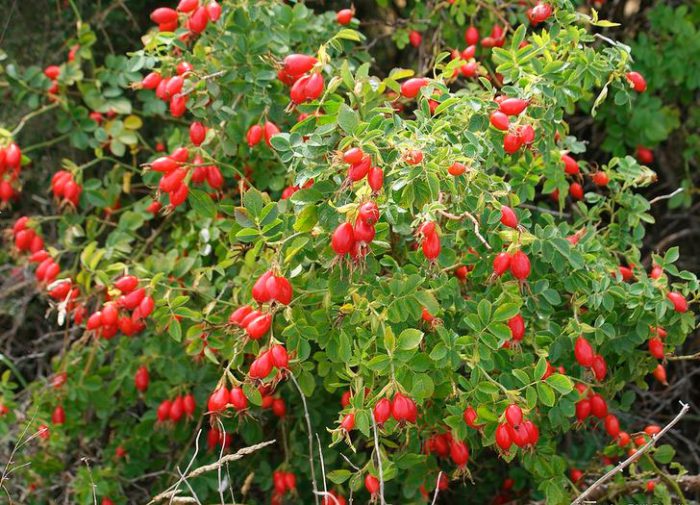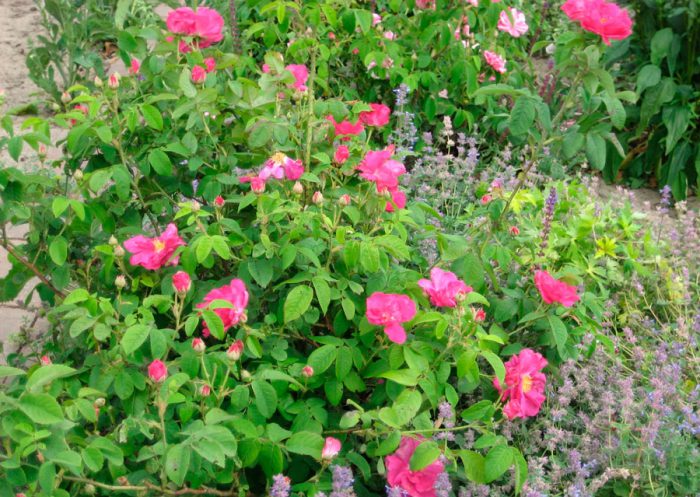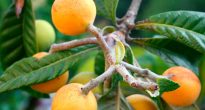Rosehip (Rosea) - This genus is a member of the Rose family. He has a large number of cultural forms, which are called Roses. According to information taken from various sources, this genus unites 400-500 species and about 50 thousand hybrids and cultivars. Even Theophrastus, Herodotus and Pliny wrote about the species diversity of wild rose. During the Renaissance, this crop was classified by dividing it into cultivated and wild species according to the number of petals in flowers. But K. Linnaeus also noticed that the dog rose is difficult to classify due to the hybridization of roses. To date, there is no exact data on how many species of rose hips grow in natural conditions. Such a plant is common in temperate as well as subtropical zones of the Northern Hemisphere. Rosehips can also be found in tropical climates, but much less frequently. Rose hips prefers to grow in groups or singly on the edges of mixed and deciduous forests, along rivers and springs, on rocky and clay banks, in coniferous undergrowth, in woodlands, on plains, in wet meadows, as well as at an altitude of up to 2200 meters above sea level.
Content
- 1 Rosehip features
- 2 Planting rose hips in open ground
- 3 Rosehip care in the garden
- 4 Rosehip pests and diseases
- 5 Types and varieties of rose hips
- 5.1 Alpine rosehip (Rosa alpina), or drooping rosehip (Rosa pendulina)
- 5.2 Rosehip May (Rosa cinnamomea), or Cinnamon Rosehip (Rosa majalis)
- 5.3 Rosehip spiny (Rosa acicularis)
- 5.4 Rosehip rugose (Rosa rugosa), or rosehip rugosa
- 5.5 Rosehip prickly (Rosa spinosissima), or femoral rosehip (Rosa pimpinellifolia)
- 5.6 Dog rose (Rosa canina), or common wild rose
- 5.7 Rusty rosehip (Rosa rubiginosa), or rusty red rosehip
- 5.8 French rosehip (Rosa gallica)
- 5.9 Gray rosehip (Rosa glauca), or red-leaved rosehip
- 6 Rosehip properties: harm and benefit
Rosehip features
Rosehip is a deciduous, rarely evergreen shrub. Its shoots can be creeping, climbing or erect, their height (or length) can vary from 0.15 to 10 meters. Most often, rose hips are multi-stemmed shrubs, the height of which reaches 200-300 centimeters, their life expectancy ranges from 30 to 50 years. In Germany, there is a rose, which is considered the oldest, according to various experts, its age is 400-1000 years. The trunk of this rose in girth reaches about half a meter, while the height of the bush is 13 meters.
The plant has a pivotal root system. The main root penetrates into the soil to a depth of 500 cm. However, most of the roots are located at a depth of no more than 0.4 m within a radius of 0.6–0.8 m from the plant.Arcuate and erect branches form a large number of branched stems, which can be colored dark red, red-brown, dark brown, brown-violet, brown-black or gray with tomentose pubescence. On stems and branches, thorns are placed in pairs or scattered. The older the stem, the harder and thicker the thorns on it. There are also studless species, for example, drooping rose. Thorns protect the shrub from animals so that they do not eat it, and also their task is to keep the branches among other plants. Unpaired leaf plates are located on long petioles, they are painted in light gray, pale red or green. On the stems, the leaves are arranged spirally. In wild species, there are 7 or 9 leaves, and in cultural ones - most often 5. Leathery rigid leaf plates are wrinkled or smooth, elliptical or rounded. The base of the leaves can be heart-shaped, round or wedge-shaped. The edge of the plates is serrate-crenate, serrate or double-serrate.
The diameter of bisexual flowers varies from 15 to 100 mm, they can be part of panicle or corymbose inflorescences, there are also single ones. As a rule, flowers have a very pleasant smell, but there are species that have an unpleasant aroma, for example, a fetid rosehip. As a rule, the corolla of the five-petalled dog rose, but it can also be semi-double or four-petal. Flowers can be white, pink, yellow, cream or red. The plant blooms in May or June, flowering duration 7–20 days. At the age of two or three, this plant begins to bear fruit. The fruits are cynarodia (multi-roots) with a special shape, their diameter varies from 10 to 15 mm. They are naked or covered with bristles, have a red, orange, purple or black color. Inside, the fruits are coarse-haired and contain a large number of single-seeded nuts. Their ripening is observed in August-September.
Planting rose hips in open ground
What time to plant
It has been noticed that if a dog rose is planted in autumn (in October – November), then it will take root much better than with a spring planting. But if there is such a need, then the plant can be planted in the spring. The best place to plant would be a sunny area located on a hill. When choosing a place for planting, it should be remembered that the root system of this culture goes into deep soil layers, in this regard, it should not be planted in saline, low-lying or wetlands, and even where the groundwater is shallow. If you plant a rosehip in such a place, then it will soon wither away. If the soil on the site is acidic, then 12 months before the day of planting it should be lime.
Such a shrub can be used both in group plantings and as a single plant. If you need to disguise an unsightly farm building or compost pile, then a rose hip bush will work very well for this purpose. Also, such thorny bushes are used for planting around the perimeter of the garden. It should be remembered that this is a cross-pollinated plant, therefore shrubs should be planted not very far from each other.
How to plant rose hips
It is best to use two-year-old seedlings for planting. Before planting in open ground, the main roots should be shortened to 0.25 m, while all the stems must be cut at a height of about 10 centimeters. If the site was prepared in advance, and all the necessary fertilizers were introduced into it, then the depth and width of the planting hole should be about 0.3 m. If this was not done, then the depth of the hole is increased to 0.4–0.5 m, and width - up to 0.5-0.8 m, during the planting of the seedling they are covered with soil combined with humus (10 kilograms per bush), you also need to add from 30 to 50 grams of potassium salt, from 150 to 200 grams of superphosphate and 60 to 70 grams of ammonium nitrate. When planting a hedge, the distance between the seedlings should be about half a meter. In other cases, the distance between the plants should be about 100 cm. In order for the dog rose to pollinate normally, it is recommended to plant bushes of various varieties (at least three) on the site.
Before planting, the roots of the plant should be dipped in a clay mash, after which they are placed in a prepared hole so that the root collar of the plant is buried 5–8 centimeters into the ground. After that, the hole is filled with nutrient soil combined with fertilizer. When the bush is planted, the soil surface needs to be compacted a little, and then watered using 8 to 10 liters of water for this. When the liquid is completely absorbed into the soil, its surface must be covered with a layer of mulch (sawdust, humus or peat crumb).
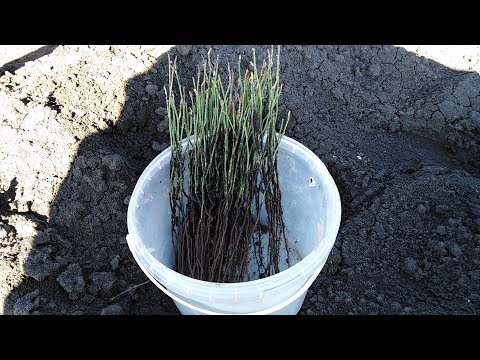

Watch this video on YouTube
Rosehip care in the garden
A rosehip that has just been planted in open ground will need to be watered abundantly and often during the first year. It should be remembered that this crop is highly resistant to drought, so in other years it does not need systematic watering. If there is a prolonged drought and heat, then under 1 adult bush you will need to pour 50 liters of water at a time, and under a young one - 20-30 liters, and that's it. This plant should be watered 3 or 4 times throughout the season.
In order for the shrub to grow and develop normally, from the second year of growth it needs to be fed with nitrogen fertilizers, introducing them into the soil. The first time the plant is fed at the beginning of spring, the second - during the period of active growth of the stems (in June – July), and the third - in September. Also, once every 3 years, compost or humus must be added to the soil under the bush (3 kilograms per plant). Each time the dog rose is fed, the soil under the bush must be watered and loosened, and then its surface is covered with a layer of mulch.
From the age of three, such a plant begins to need systematic pruning. To do this, you need to cut out all weak, diseased or dried stems, and also shorten annual growths to 1.7-1.8 m. When the bush turns 5 years old, it should include from 15 to 20 branches of different ages, which are evenly removed from each other. Branches over 7 years old must be replaced. It is recommended to prune such a crop in the spring before sap flow begins, the fact is that it tolerates pruning in the fall extremely poorly. Note that over-shortening of the stems will cause the young growth to grow actively in the next season, but it will not bear fruit.
Since the dog rose is a rather thorny plant, its fruits must be collected, protecting hands with thick gloves, and wearing strong clothing. The collection of fruits is carried out gradually, since their ripening begins in August and ends only in mid-October. All fruits must be harvested before frost, as otherwise they may lose their properties.
Rosehip transplant
Sometimes it becomes necessary to transplant an already adult rosehip bush to another place. This can happen, for example, due to planting on plants in an area not suitable for it, or if the soil becomes excessively scarce. The transplant is recommended in the spring or in October and November. Preparing the pit and nutrient soil should be done in advance. A cloudy day is good for transplanting. The bush must be carefully dug up and after the soil is loosened, the bush is pulled out along with the earthy clod, while trying not to injure its root system. Immediately after the bush is removed from the ground, it must be moved to a new location. It should be remembered that the root system of this culture reacts extremely negatively to heat, therefore, the longer it stays on the surface, the less likely the shrub will successfully take root after transplantation. During flowering, it is impossible to carry out a transplant, it is recommended to do this either before the sap flow begins, or when it ends.
Rosehip breeding
Rosehip seeds are harvested in August, when the fruits are still brown unripe, and their shell is relatively soft. Seeds are sown in October directly into open soil; the grooves must be covered with sawdust or humus from above. To make the seedlings appear faster in spring, a frame is constructed over the crops, on which a plastic wrap should be pulled. After the seedlings have formed 2 true leaf plates, you can start planting them. If sowing is scheduled for spring, then the seeds are best stratified, for this they are combined with river sand or peat and removed to a cool place with a temperature of 2-3 degrees (for example, a refrigerator). Remember to periodically remove and stir the seeds.
If you propagate the rosehip by root suckers, then it will be possible to preserve all the varietal characteristics of the parent bush. In spring or autumn, it is necessary to find an offspring, the height of which can vary from 0.25 to 0.4 m. This offspring must be cut off from the mother plant using a shovel, and then transplanted to a new place. There is another way of propagation by root shoots. The offspring does not separate from the mother bush, it should be highlighted and watered in a timely manner throughout the season and, if necessary, sprinkled with soil under it. The offspring will grow adventitious roots, and in the fall of the next season it can be cut off from the parent bush, and with the onset of the next spring period, carefully removed from the soil and planted in a new place.


Watch this video on YouTube
Rosehip pests and diseases
This crop is not resistant to diseases or pests. The following pests most often settle on it: sawflies, aphids, leafhoppers, slobbering pennies, spider mites, leaf rollers, bronze beetles and deer.
Sawfly larvae
The larvae of the white-belted and descending sawflies gnaw four-centimeter long passages in young shoots, because of this, the stems become dark and dry out. To get rid of such larvae, you need to use insecticidal or pesticide preparations. In autumn, the soil near the shrub must be dug up, in this case, the larvae of this pest, which are on the surface, will freeze, while the affected stems should be cut and destroyed before the larvae emerge.
Fruit caterpillars
The young foliage and stems of the plant can be damaged by the caterpillars of the fruit and 3 different types of rose leafworm. If there are few caterpillars, then they are removed from the bush manually. In the spring, before the buds open, the plant must be sprayed with a pesticide solution.
Spider mites
Spider mites, which are sucking insects, suck the cell sap from the foliage and stems of the shrub. Also, together with aphids, they are the main carriers of viral diseases, effective medicines for which have not been found to date. Such a pest settles on a bush during prolonged drought, especially if it has not been watered for a long time. If you wish, you can try to drive away ticks, for this 3 or 4 times a day it is necessary to spray the wrong surface of the leaf plates of the bush with cold water. And in order to get rid of them quickly and effectively, you can use acaricide.
Slobbering penny
On the seamy surface of the plates, as well as in the leaf sinuses, a drooling penny is placed. This sucking pest feeds on cell sap and secretes a foamy substance. If you touch an insect, then it quickly jumps out of the foam and tries to hide. To get rid of such a pest, the bush is treated with an insecticide solution.
Rose leafhopper
Rose hips can be very harmful to the rose hips, which gives 2 or 3 generations per season.Because of it, many white dots appear on the surface of the foliage, the plates become like marble and lose their attractive appearance. After a while, they turn yellow and fly around ahead of time. To get rid of such a harmful insect, it is necessary to treat the bush and the surface of the site with an insecticide solution 2 or 3 times, while the interval between procedures should be equal to 10-12 days.
Rose aphid
Rose aphids settle in large colonies on rose hips; they are located on buds, peduncles and on the seamy surface of leaf plates. Aphids feed on plant sap and carry viral diseases. For 1 year, this pest can give more than 10 generations. Preventive treatment is carried out at the beginning of the spring period; for this, a contact insecticide solution is used. Subsequent spraying can be carried out using a solution of Actellic, Antio, Karbofos, Rogor and other means of similar action.
Deer and bronze beetles
Bronze and deer beetles gnaw pistils and stamens in flowers, and also eat petals. Bushes with light-colored flowers are especially popular with such pests. The collection of beetles is carried out early in the morning, at which time they sit, practically not moving. The collected insects must be burned.
Powdery mildew
Most often, this shrub suffers from the following diseases: powdery mildew, black spot, rust, chlorosis and peronosporosis.
To get rid of powdery mildew, you need to spray the plant with a suspension of colloidal sulfur (1%) or another fungicide. To make the rosehip more resistant to powdery mildew and other diseases, it should be fed with fertilizers containing potassium.
Black spot
In the second half of the summer period, specks of brown-black color may form on the petioles and foliage - these are symptoms of black spot infection. If the dog rose is very badly affected, then its foliage becomes dark, dries up and flies around. In order to prevent further development of spotting, it is necessary to remove all infected leaf plates and stems, they must be destroyed. Under the bushes, the soil is dug up with a turnover of the layer. In autumn and spring, the plant should be sprayed with insecticidal preparations.
Rust
If the bush is affected by rust, then on the seamy surface of its foliage you can find a large number of dusty spores and small yellow-orange pads. As the disease progresses, deformation of stems, flowers and shoots is observed, as well as drying of leaf plates. Cut out and destroy the affected parts of the plant, dig up the soil under the bush. Before covering the rosehip for wintering, it must be treated with a preparation containing copper, for example, copper sulfate.
Chlorosis
If spots of yellow or white color are formed on the surface of the leaf plates, this means that the bush is sick with chlorosis. It develops due to a deficiency of boron, manganese, magnesium, zinc, iron or other substances needed by the rose hips. For example, if it lacks iron, then the chlorotic color appears on the entire leaf plate, except for the large veins, while chlorosis first affects the apical young leaves. If there is a lack of zinc, the chlorotic color spreads along the edge of the leaf plate, while the color of the leaf does not change along the lateral and central veins. With a deficiency of magnesium, yellowing and death of leaf plates is observed, and the color of the veins remains green. If the plant lacks boron, then the tissues of young leaf plates thicken, and they also turn pale and become fragile. Find out what caused chlorosis, and then add the desired element to the soil. If you wish, you can feed the plant with the necessary element using a foliage method.
The greatest danger to this culture is represented by downy mildew (peronosporosis). The development of this disease is observed in rainy and hot weather.To combat it, fungicides and agricultural techniques are used.
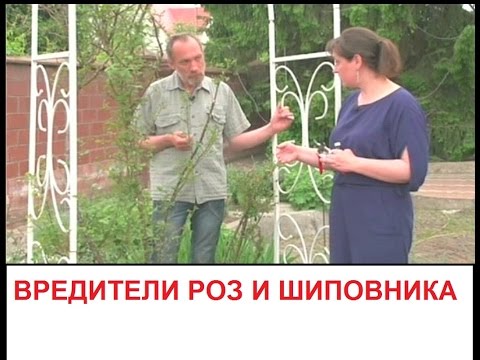

Watch this video on YouTube
Types and varieties of rose hips
Today, the classification of rose hips is used, which divides the genus into 4 subgenera: 3 subgenera are small, they include 1 or 2 species that are knocked out of the general system, while the fourth is the subgenus Rose, which contains 10 sections and 135 species. The varieties and types that are most popular with gardeners will be described in detail below.
Alpine rosehip (Rosa alpina), or drooping rosehip (Rosa pendulina)
In natural conditions, it is found in the mountains of central Europe. The height of this shrub is no more than 100 cm, it does not have thorns. Large flowers of a rich color, located on long pedicels. After the petals fly around, the flowers droop immediately. Long, spindle-shaped fruits of dark red color hang from the bush like earrings. On the surface of fruits and pedicels there is a long glandular bristle, due to which the dog rose looks very original and spectacular.
Rosehip May (Rosa cinnamomea), or Cinnamon Rosehip (Rosa majalis)
This species is widespread in the European part of Russia and in Ukraine. The flowering of such a shrub is observed in May-June, at this time many large rich pink or pinkish flowers open on it. This species is quite variable, so, its height can reach 250-300 cm or only 100 cm, while such a dog rose forms thin thickets, which occupy quite extensive areas. A distinctive feature of this plant are thin paired thorns located on flower-bearing stems, and also their stem bases are densely covered with needle-like small thorns. For group plantings, it is recommended to use a terry winter-hardy form of this species, the flowers of which are painted in pink-purple color.
Rosehip spiny (Rosa acicularis)
This plant is found naturally in the northern regions of Europe, America and Asia, while it can grow in groups or singly. The height of such a shrub can vary from 100 to 200 centimeters. The stems are densely covered with many thin spines and arcuate setae. Large flowers can be single or collected in 2 or 3 pieces, they have a dark pink or pink color. Red fruits are oblong in shape. This species is winter-hardy and has a comparative shade-loving nature; it perfectly adapts to city conditions. It is recommended for the creation of hedges and is also used as a stock for cultivars.
Rosehip rugose (Rosa rugosa), or rosehip rugosa
In nature, this species is found in North China, Korea and the Far East; it prefers to grow in thickets of coastal meadows and sea coasts. The height of this shrub is about 250 centimeters. The leaf plates are highly wrinkled, sometimes shiny. The leaves include from 5 to 9 leaflets, on the seamy surface of which there is a greenish-gray pubescence. The inflorescences consist of 3–8 fragrant flowers, which can also be single. In diameter, the flowers reach 6-12 centimeters. Depending on the variety, they can be simple or double, the number of petals per flower can reach 5–150, while their color is pink and white. Flowering lasts the entire summer period, in this regard, flowers, buds and fruits may be present on the shrub at the same time. The following varieties are most popular with gardeners:
- Pink Grootendorst... The height of the shrub is about 150 centimeters. The shape of the crown is spreading pyramidal. Wrinkled glossy leaf plates are greenish in color. Densely double flowers of light pink color, in diameter they can reach 30-40 mm. The edges of the petals are carved. Inflorescences are outwardly similar to bunches of carnations.
- Grootendorst Suprem... The color of the double flowers is dark crimson.
- Konrad Ferdinand Meyer... Such a plant blooms 2 times per season. Densely double fragrant flowers have a rich pink-silver color.
- Hanza... Terry fragrant flowers reach 8-10 centimeters in diameter. Their color is purple-red.
- Agnes... Fragrant double flowers have a diameter of 7 to 8 centimeters, they are painted in a creamy yellow color, while their middle is a darker shade.
- Georges Ken... Very fragrant semi-double large flowers are cupped and dark red in color.
Rosehip prickly (Rosa spinosissima), or femoral rosehip (Rosa pimpinellifolia)
In nature, this species can be found in the Caucasus, in Western and Eastern Siberia, in the European part of Russia, in the Crimea, Western Europe and Central Asia. This rosehip prefers to grow in hollows, forests, forest glades and forest edges, and on lime deposits. This shrub is not very large, but incredibly thorny, thin thorns are located on the stems and on the petioles of leaf plates. The leaves are small, but very graceful, in summer they are green, and in autumn their color changes to purple. The diameter of single flowers is about 50 mm, they can be colored pale yellow or white. The black fruits are spherical in diameter and reach about 15 mm. The species is winter-hardy, does not differ in high demands on the soil, perfectly adapts to urban conditions and has a large number of cultural variations and forms. Popular varieties:
- Golden Wings... The height of the shrub varies from 150 to 180 cm. Semi-double or simple flowers have a diameter of 50-60 mm and a yellowish color.
- Frühlingsdaft... The height of the shrub is about 200 cm. Fragrant peach-colored flowers are single or collected in inflorescences. Stems are brownish-red prickly.
- Frülingsmorgen... Simple yellowish flowers are very fragrant. The petals have a pink edging.
- Karl Foerster... Large double white flowers have a high center and a faint smell.
- Prairie Yurs... Semi-double large flowers have a pinkish color.
- Schloss Seutlitz... Semi-double creamy yellow flowers reach 70–80 mm in diameter and have a subtle scent.
Dog rose (Rosa canina), or common wild rose
In nature, this species is found in Western Asia, Central and Southern Europe and North Africa. He prefers to grow in small groups or singly along gullies, on forest edges, in thickets of bushes and on river banks. The height of the shrub is about 300 cm. The arched, spreading branches have strong curved thorns. The composition of not very large leaf plates includes from 5 to 7 serrated along the edge of the leaves of a pale gray or light green color. Multi-flowered inflorescences consist of pinkish flowers five centimeters in diameter. Saturated red smooth fruits have a round or elongated-oval shape and two centimeters in diameter. Possesses average frost resistance. This type is considered the best for rootstocks for varietal roses.
Rusty rosehip (Rosa rubiginosa), or rusty red rosehip
The homeland of this species is Western Europe. Such a plant prefers to grow at the edges of the forest, in thickets of bushes, in ravines and on rocky slopes. This multi-stemmed densely branched shrub reaches a height of about 50 cm. Its crown is compact, and its prickly spines have a hook-like shape. The composition of pinnate leaf plates includes from 5 to 7 leaves, their front surface is weakly pubescent, and the back is a glandular rusty color. Pink or red flowers of three centimeters in diameter can be semi-double or simple, single, or be part of lush corymbose inflorescences. The hemispherical fruits are red in color.
French rosehip (Rosa gallica)
In height, such an upright shrub reaches 50 centimeters. The length of the leaf plates is about 12.5 centimeters, they consist of 3-5 large leathery leaves of a dark green color, their seamy surface is painted in a lighter color, and also covered with glandular pubescence. Large flowers can be double or simple, they are 2-3 pieces in the inflorescence or are single. Flowers can be painted in various shades from deep red to dark pink. The diameter of the spherical fruits is about 15 mm.This species is quite frost-hardy, but when cultivated in mid-latitudes it can suffer from severe frost. Garden forms:
- Medicinal... The bush is very similar to the main species, but its flowers are double.
- Thornless... Terry flowers. This plant has no thorns at all.
- Volatile... On one flower, the color of the petals changes from deep purple in the middle to dark pink-red on the outer petals.
- Dwarf... A miniature bush is decorated with simple red flowers.
- Shiny... Simple or semi-double flowers are painted in carmine color.
- Pubescent... The color of the flowers is red-purple. The surface of pedicels, sepals, rounded leaves and stems is densely covered with bristles.
- Agatha... The purple double flowers are smaller than those of the main species.
The most popular are the following varieties of this type:
- Compliant... Flowers, simple with a faint smell, are painted in a deep pink color and have a white center. Their diameter is about 10 centimeters.
- Versicolor... Pinkish semi-double flowers have a very weak aroma, their diameter varies from 8 to 10 centimeters. On the surface of the flowers there are specks and strokes of a more saturated shade than the main color. Matte leaf plates are greenish.
Gray rosehip (Rosa glauca), or red-leaved rosehip
This park bush is very effective. In nature, it can be found in the mountains of Asia Minor, Southeast and Central Europe. The height of the bush varies from 200 to 300 cm. Thin thorns can be straight or slightly curved. The composition of the leaf plates includes from 7 to 9 elliptical leaves. Stems, leaves and stipules are covered with a light blue bloom with a violet-red tint. Saturated pink flowers reach 35 mm in diameter, they can be single or collected in inflorescences of three. Rounded cherry-colored fruits reach 15 mm in diameter. The species is resistant to drought and frost, it perfectly adapts to city conditions, and it can also be grown on limestone soil. In the form of flora captivity, double flowers are painted in a lighter color shade, which look spectacular against the background of foliage.
In addition to these types, gardeners grow such as: white rose, Bourbon, smelly, or yellow, Damascus, Daurian, Chinese, Kokand, Maksimovich, multiflorous, mossy, musky, Portland, columnar, apple, or hairy, Elena, etc.


Watch this video on YouTube
Rosehip properties: harm and benefit
Useful properties of rose hips
Most of the species of rose hips have a lot of vitamin C in the composition of fruits. In lemons this vitamin is 50 times less, in black currants - 10 times less, and in the needles of fir, spruce, juniper and pine - 60–70 times less than with rose hips. Begger's rose hips are leaders in the content of vitamin C. Also, these fruits contain vitamins B1, B2, B6, E, K, PP, carotene, tannins and coloring agents, malic and citric acids, sugars, phytoncides, essential oils, and potassium , magnesium, phosphorus, iron, calcium, copper, chromium, cobalt, molybdenum, and manganese. The flowers of this plant include essential oil, organic acids, glycosides (bitterness and saponins), sugars, fatty oils, flavonoids, tannins, wax, ascorbic acid, anthocyanins (peonidin, cyanidin, peonin). The leader in the content of essential oil are petals of wrinkled rosehip.
Rosehip oil has antibacterial, anti-inflammatory and fixing effects. It activates regeneration processes in injured tissues and mucous membranes. In this regard, it is widely used for cracks, dermatoses, trophic ulcers and abrasions.In addition to vitamin C, foliage contains catechins, flavonoids, tannins, phenolcarboxylic acids and their derivatives. An essential oil is found in the foliage of the blood-red rose hips, and polysaccharides and carotenoids are part of the leaf plates of the May rose hips. The branches contain saponins, catechins, vitamin P, flavonoids, in the bark - sorbitol, in the roots - tannins, catechins, flavonoids, triterpenoids.
The fruits help to improve metabolic processes in the body, cleanse the circulatory system. They are recommended for use in cases of anemia, scurvy and diseases of the kidneys, liver and bladder. They are used as a tonic, tonic, strengthening the body's resistance to infectious diseases and weakening the development of atherosclerosis. To prepare it, you need to combine half a liter of water and 2 large tablespoons of chopped fruits. The mixture is allowed to boil for a quarter of an hour on low heat. Then the broth is well wrapped up and in this form it should stand all night, in the morning it is filtered. They drink during the day instead of tea, mixed with honey.
The broth, made from fruits and roots, has a multivitamin, choleretic and mild diuretic effect, and it can also lower blood pressure. It helps improve appetite and red blood cell production and strengthens the walls of blood vessels. The juice helps to normalize the functioning of the kidneys, liver and stomach, improves resistance to infections, helps to activate metabolic processes and stimulate sexual activity, cleanses the body of toxins, normalizes blood circulation, improves memory, and eliminates pain in the head. Juice is a powerful antioxidant, and it also helps to quickly quench your thirst.


Watch this video on YouTube
Harm
People with high blood pressure should not use rosehip alcohol tincture. At the same time, the use of aqueous rosehip infusions is contraindicated for hypotensive patients. Rosehip is not allowed for people with impaired blood flow.
If the funds made on the basis of rosehip are used for a very long time, this will negatively affect the condition of the liver, because they help to inhibit the secretion of bile. The broth is contraindicated in chronic constipation. All products made on the basis of this plant are prohibited for use by people prone to thrombosis. The heart also needs to be careful, with endocarditis and other diseases, such drugs, taken in large quantities, contribute to the development of complications. If you have dermatological problems, you should consult your doctor before using rose hips.

